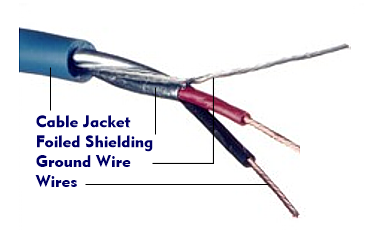unshielded twisted single pair (UTSP)
Unshielded Twisted Single Pair (UTSP) is an Ethernet variant developed by the OPEN Alliance BroadR Reach( OABR). It was originally intended for use in telecommunications, but is suitable for automotive Ethernet and industrial Ethernet.
In contrast to Fast Ethernet to 100Base-T, which uses a TP cable with two twisted pairs of wires, UTSP Ethernet to 100Base- T1 uses only a single, unshielded twisted pair of TP wires over which the transmit and receive signals are transmitted bidirectionally as differential signals in full duplex at a data rate of 100 Mbps. The signals run in both directions - uplink and downlink - and overlap. They are filtered out by the transceivers.
The specifications of the UTSP cable can only be achieved if the cable characteristics and cable symmetry are precisely observed. These include the conductor cross-sections in question, the exact same length of the two twisted conductors and, above all, the stranding, lay length and length of the untwisted conductor ends. These must be precisely executed. It is also important that the untwisted cable ends of the UTSP cables are no longer than 50 mm.
The Open Alliance technology goes one step further and also transmits Gigabit Ethernet according to 1000Base-T1 via a single twisted pair of wires. 1000Base-T, on the other hand, works with four pairs of wires, each operating at 250 Mbps. With UTSP Ethernet, the physical coding sublayer( PCS) is adapted to the single-pair data cable. This includes ternarypulse amplitude modulation (PAM3).

